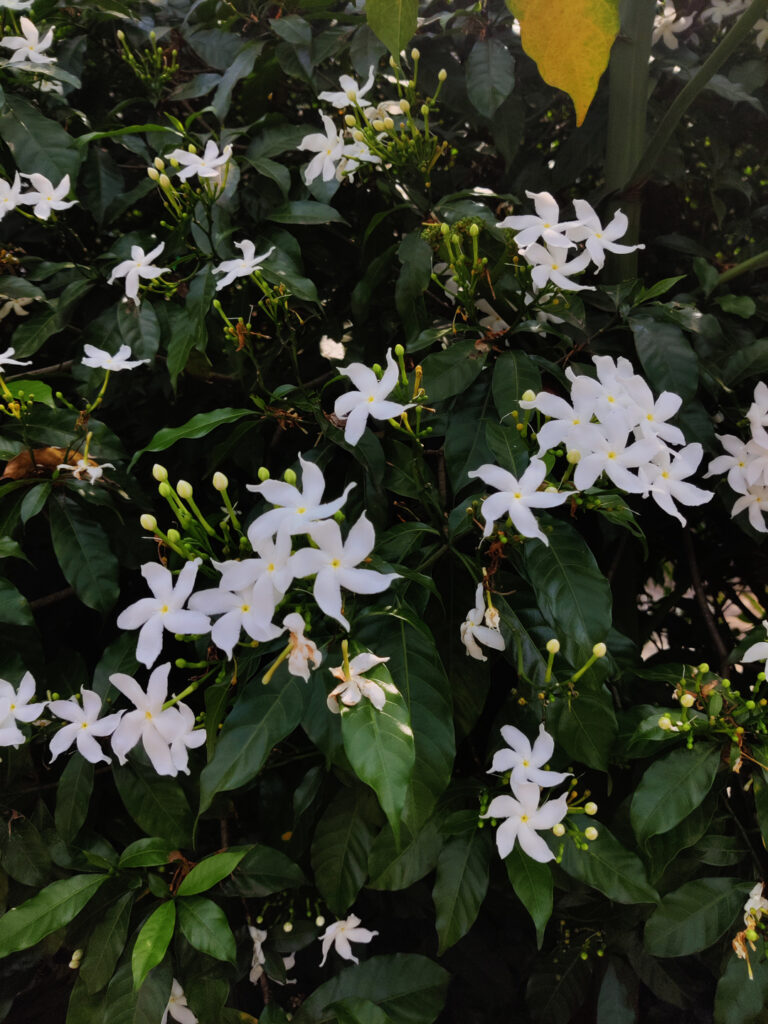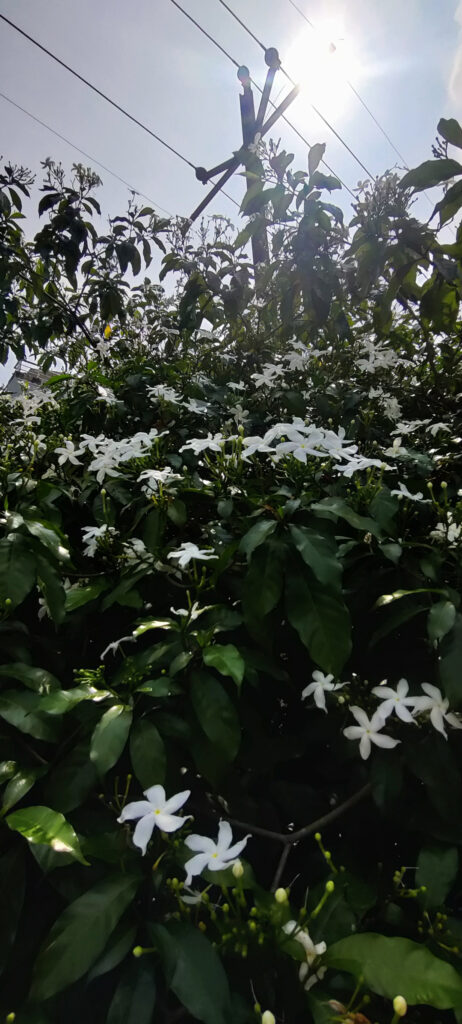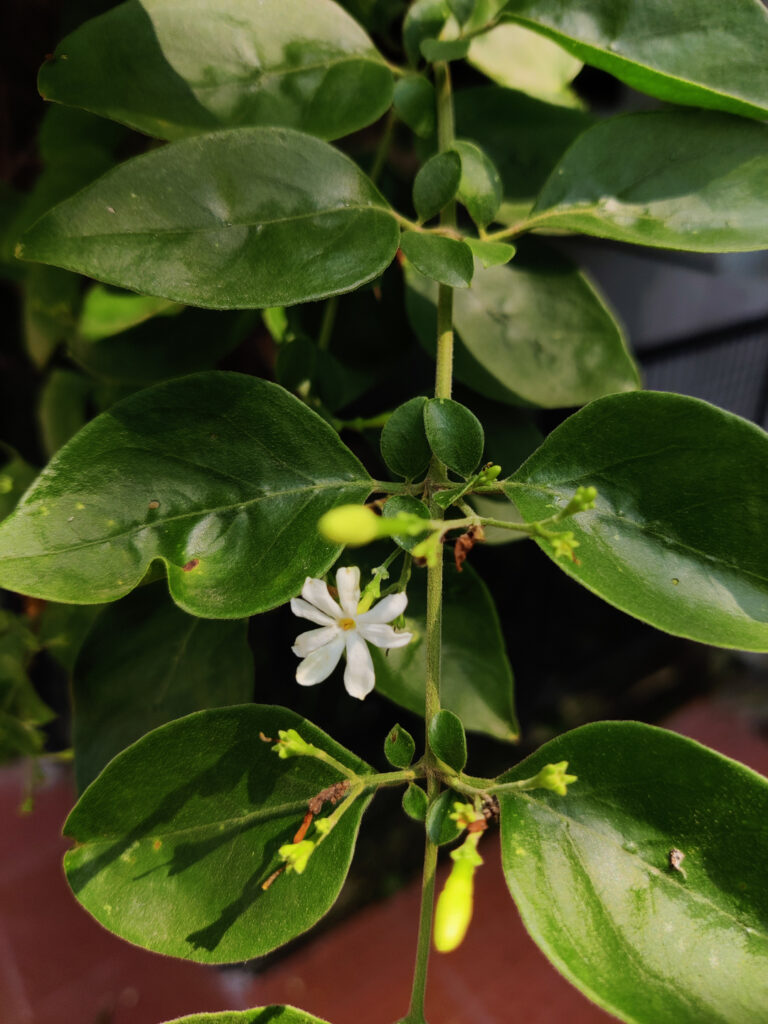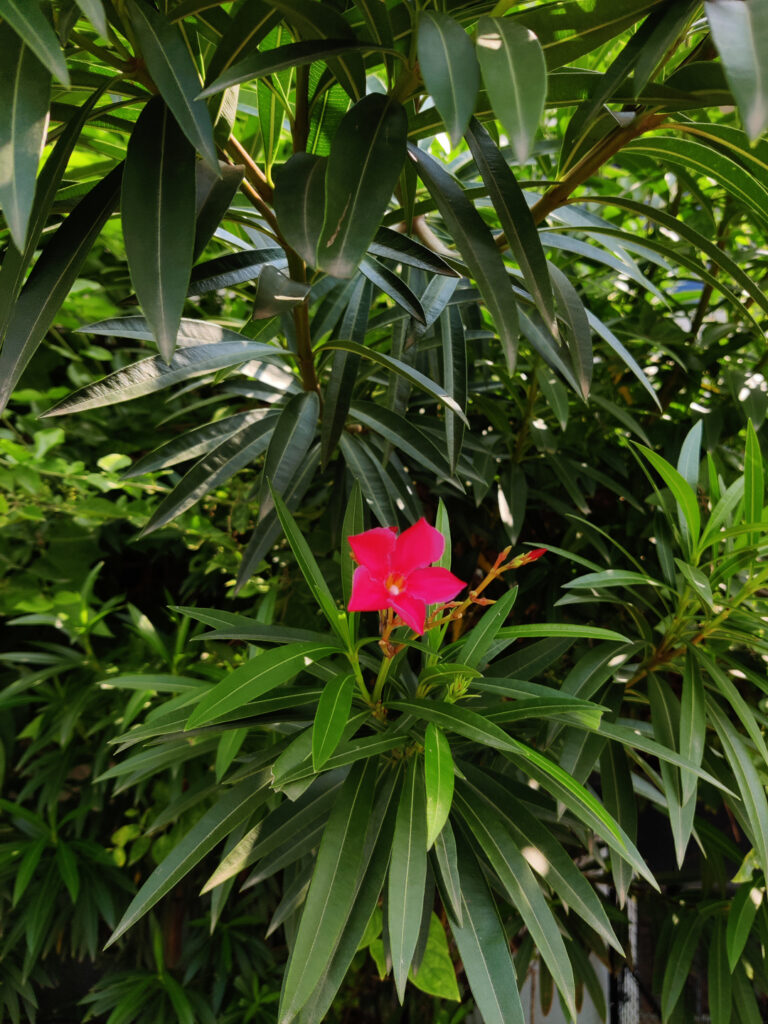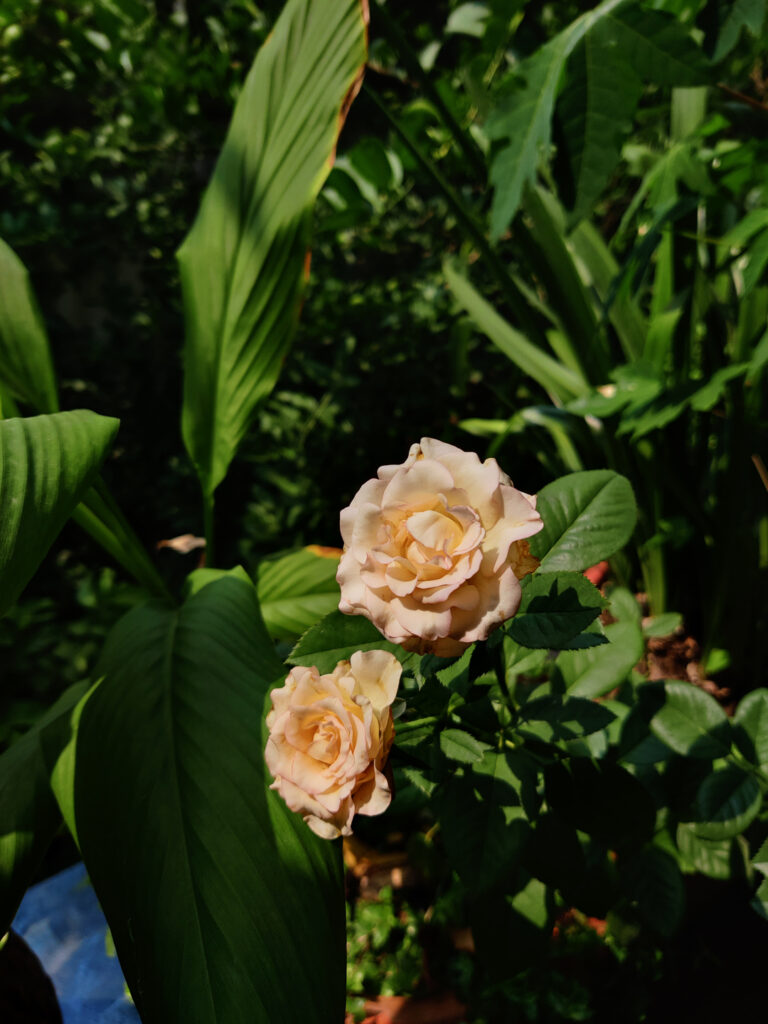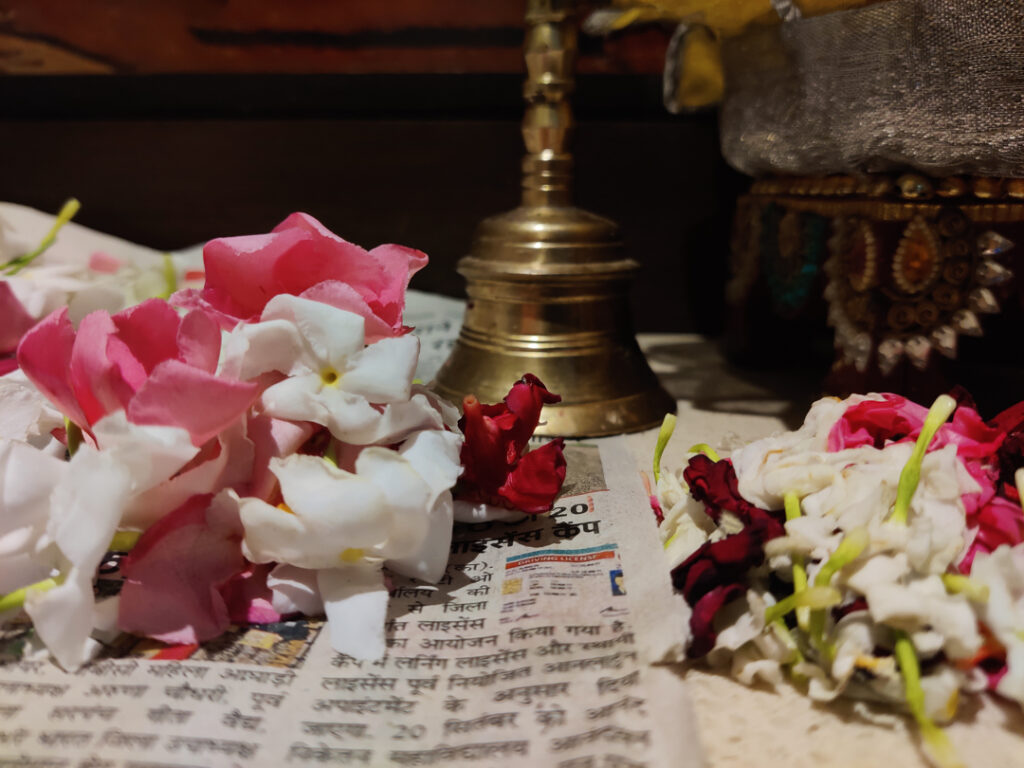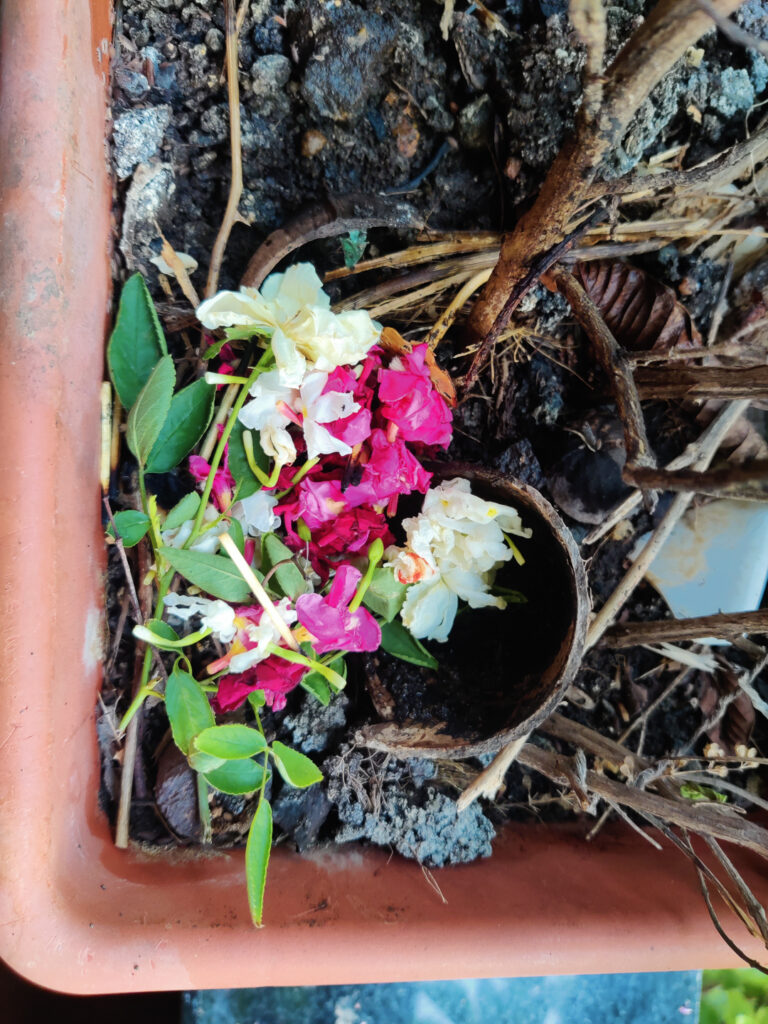Prerana Chandak shares images of the flowers that play an important role in her Hindu faith and practice.
Worshipping is an act of ultimate sacredness and faith. It’s also associated with self-realization and introspection. Worshipping is also associated with a lot of intricate details like flower offerings, and sweets offerings. What moved me to make this story was how flowers are an integral part of worship and how a life of flowers makes a complete circle while going through the act of worship.
Har ghar Mandir, har ghar Pooja: A snapshot of diya-batti done around dusk/ sun down (suryaast) at my home;
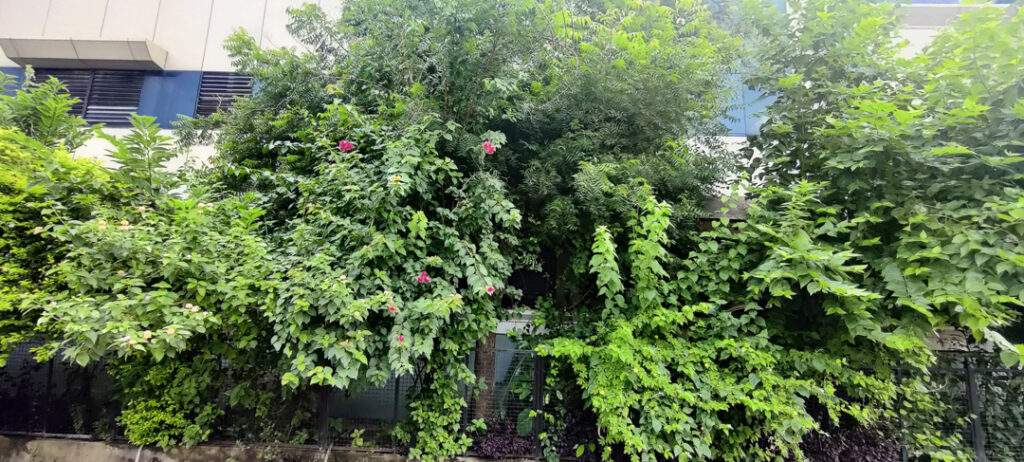
Photo: Prerana, Date: 26th September 2022, Time: 10.34amMERA GHAR: The green cover grown in front of my home+hospital, since it is West-facing and saves us from the scorching heat of the day. Trees grown are Neem, Papaya, Plumeria, Bougainvelia; Woody shrubs like Golden Duranta, Lanatana camara (an invasive), Raat-rani (night blooming jasmine), Oleander interspersed with some opportunistic climbers and shrubs;
KAHANI GHAR GHAR KI
- Photo: Prerana, Date: 26th September 2022, Time:10.36am
Walk only a few steps South to Dr. Umak’s house, you will find this beautiful Swastik (Ver.) (Tabernaemontana divaricate) tree laden with white flowers all over like stars in the sky on a clear night. Since they grow in abundance, they don’t mind us borrowing some of their flowers for our everyday pooja. I believe it’s a communal feeling that brings us all together in a taluka place like Warora.
If only you could smell this picture: Raat rani(ver.)/Juhi (Jasmine auriculatum) My mother’s personal favorite, would be yours too if you could smell them, heavenly is one word I will describe the fragrance found right at our gate
Pretty toxic: These pretty flowers grow in two shades of dark and light pink. Kaner in vernacular language is scientifically called Nerium Oleander. It’s a tough, long flowering, fast-growing, evergreen, ornamental woody shrub but all parts of oleander are essentially toxic to both humans and animals alike. So much so that if bees only make honey out of the nectar of Oleanders exclusively the honey would be poisonous, lethal even. Hence, unity in diversity is a must.
- Photo: Prerana, Date: 26th September, Time: 10.30am
A love story of sorts: My father has a green thumb. He has grown and nurtured this rose plant all by himself, he even puts banana peels as fertilizer because it provides the plant with potassium and helps flowers grow rapidly. On special occasions, my mother plucks these flowers when they are full grown and offers them to the God she wishes and pleases. A symbiosis of a beautiful kind I must say.
The thin line: In our household, we are very stringent about worship rules, for example, one should only enter the temple after taking a bath, one should not enter the temple during menstruation, and one should give a bath to the deity (Laddoo Gopal, Ganesha, Shivling) everyday first thing in the morning and put them in new attire, decorate them with flowers, put on Chandan, vermilion and a few grains of rice on their foreheads in a process called Pooja, post which we proceed on to lighting the Diya and doing the Arti.
Old flowers are collected and discarded as seen suitable, and the water with which we give our deities a bath is collected and offered to Tulsi or the holy basil (Ocimum Sanctum).

Deities after pooja adorned with flowers namely Swastik, Juhi, and Kaner. Leaves from Tulsi and seeds are eaten in the form of prasad along with Khadi shakkar; photo: Prerana, Date: 25th September, Time: 5.30pm
- Photo: Prerana, Date: 25th September 2022, Time: 5.38pm
Tera tujhko arpan, kya laage mera: The discarded bunch from our mandir contains flowers from the previous day, match sticks, cotton wick if any, and the remaining wooden stick from the incense stick. In my home, we discard these flowers and other said materials to the Tulsi plant along with the water previously mentioned.
This entire process made me wonder about the sustainability of the entire system speaking for our household at least. Worshipping God in a country like India is as natural as taking a bath because we are majorly a Hindu country. It’s our culture and also for the most reason that keeps us sane and grounded (saying Bhagwan se toh darr– when someone is trying to do something wrong). Hospitals and schools hear more prayers than actual temples do but we still go to the temples because that’s where our foundation of faith comes from. Faith, you see has to be founded in something physical as much as in the stories and emotions. Faith keeps us moving.
Dr Prerana Chandak is a second-year student in MSc. environmental science who lives in Pune, India.

